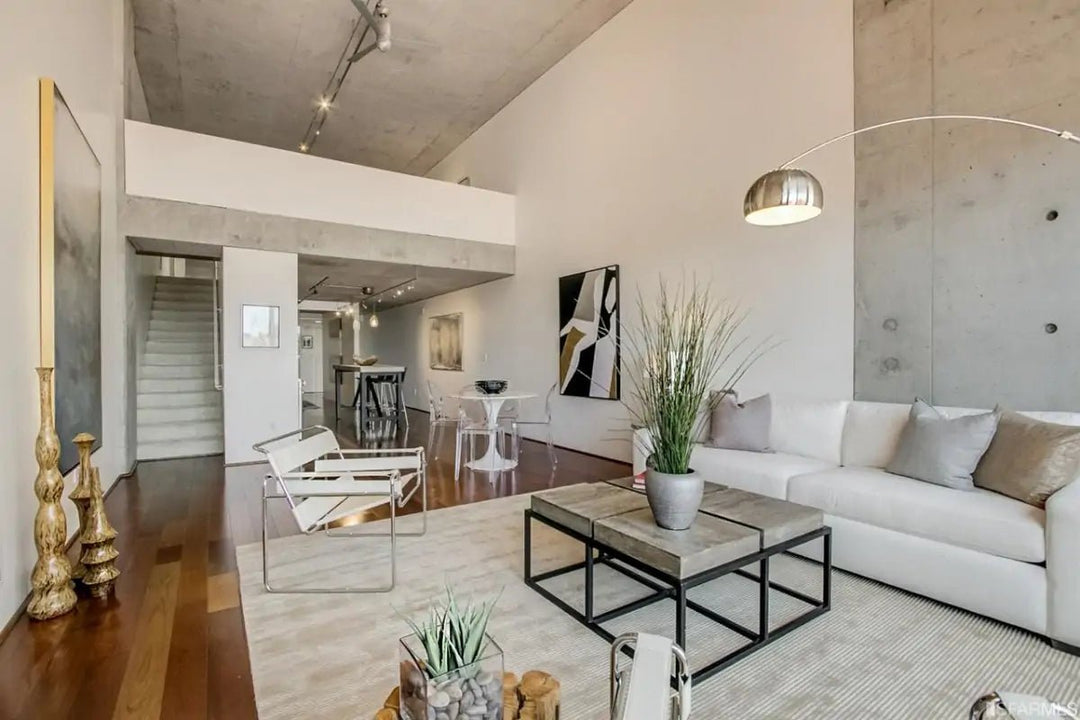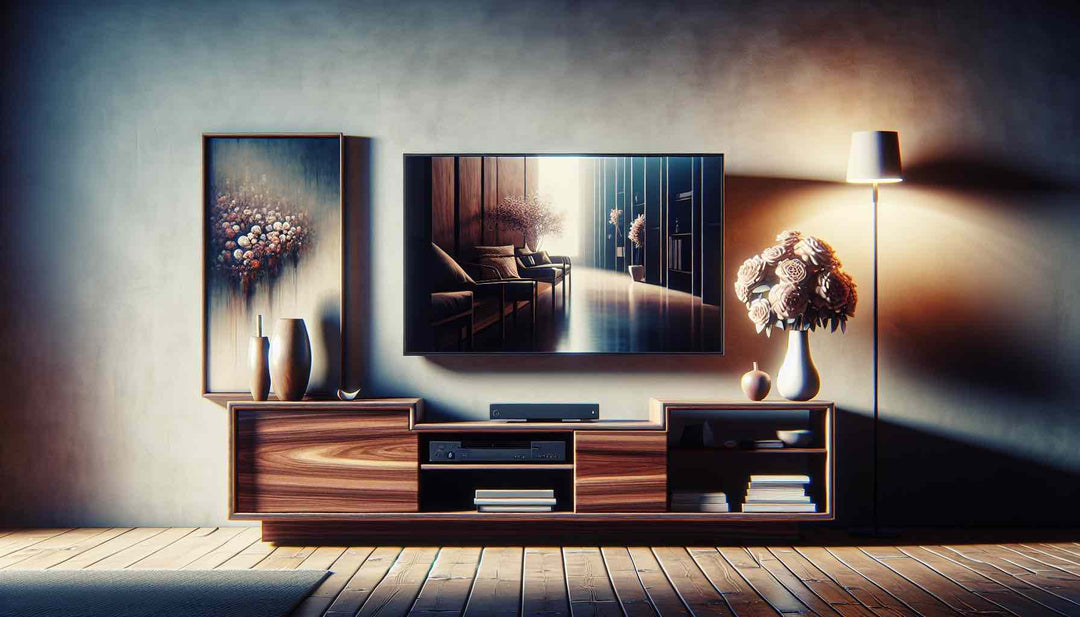Why Is Minimalist Design So Popular?

To understand why minimalist design is so popular, one needs to see a love of simplicity and calm spaces. This approach removes the non-essential. It leaves room for clarity and freedom in our environments and minds. The minimalist design symbolizes efficiency and beauty through simplicity. This idea resonates deeply in our cluttered world. Join us as we delve into the essence of its allure and its ongoing influence on our lifestyles.
Key Takeaways
Minimalist design has risen to prominence by emphasizing simplicity and functionality. It also emphasizes 'less is more' aesthetics. It is influenced by traditions such as Japanese and Scandinavian design. It is also influenced by artists from the minimalist art movement.
Minimalist design principles help mental clarity, productivity, and well-being. They also offer timeless versatility that fits with individual expression and modern trends.
Minimalism focuses on conscious consumption and sustainability. It reflects a more purpose-driven lifestyle. It has practical benefits like less stress, saving money, and promoting conservation.
The Rise of Minimalist Design

Minimalist design was once radical. Now, it is a mainstay in homes and galleries worldwide. Its ascent began in the 1960s and 1970s, a time marked by change and innovation. Artists like Frank Stella and Donald Judd led the way. They challenged the status quo with simple, observable forms. They stripped away story and extra details. This style is minimalist. It set itself apart with clean, geometric shapes and an industrial look. It was different from the expressive forms of Abstract Expressionism.
Minimalist design gained traction among artists and designers. It became a defining style of the era. It shaped the visual language of modern design. Aesthetic minimalism played a significant role in this evolution.
Art Movement Origins
Minimalist art emerged from the desire for simplicity and reduced forms. It greatly shaped the aesthetic of the 20th century. It was sparked in the busy artist communities of New York. The movement saw artists use fewer colors, shapes, and textures. They distilled their work to the most important elements. It drew inspiration from historical movements. These include Russian Constructivism and figures like Marcel Duchamp. Minimalism reflected a return of early 20th-century influences.
Minimalism became more popular. Museum curators, art dealers, and new patrons supported it. This increased its acceptance and momentum. It solidified its status as an influential art movement.
Influence of Japanese and Scandinavian Design
The elegance of Japanese and Scandinavian design is simple and functional. It has greatly shaped minimalist design. The Nordic design aesthetic has left an indelible mark. It influenced many designers with its blend of simplicity and utility. These cultures highlight natural materials. They also stress harmonious integration with the environment. This focus has enriched minimalist design with warmth, light, and texture.
For instance, Scandinavian architects are known for using natural elements and materials. They integrate them seamlessly into their buildings. This ensures that their buildings complement, rather than dominate, their surroundings.
The Appeal of Minimalist Aesthetics

The world loves minimalist design because its ideology is that 'less is more.' The internet is everywhere, so people seek cleaner, uncluttered, and orderly lives. Minimalist design is practical because it adapts to long-term solutions. It is also versatile across architectural styles, allowing space for individual expression.
Also, minimal aesthetics create spaces good for clear thinking and happiness. They boost productivity and control and cut stress and mental effort. Minimalist design's lasting appeal is in its focus on function. It has hallmarks such as neutral colors, uncluttered spaces, and a sense of space.
Clean Lines and Uncluttered Spaces
Minimalist design focuses on simplicity. It uses clean lines and a clutter-free environment with a neutral color scheme. This creates visual calmness. The simplified spaces have minimalist decor. They help with clear thinking and problem-solving. They offer a distraction-free backdrop. This encourages deep concentration and brings tranquility.
Empty space and a careful arrangement of elements are key to minimalist design. Even small changes have a big impact. For example, reorganizing or decluttering improves a room's feel. Choosing a minimal design is more than an aesthetic choice. It embodies a lifestyle that aspires to tranquility and harmony through simplicity. Minimalism includes only necessary elements in a space.
Timelessness and Versatility
Minimalist design endures. It stays strong despite changing fads. This is because it focuses on simplicity, functionality, and elegance. Minimalist design offers simple guidelines. They allow for personal customization and flexibility. It does not enforce strict rules. It encourages individual interpretation. Minimalism aligns with modern lifestyle trends. It emphasizes enriching experiences and sustainability over possessions.
Minimalist design is versatile and timeless. It adapts seamlessly to individual goals and values. It stays popular through economic and lifestyle shifts.
Minimalism as a Lifestyle Choice
Minimalism as a lifestyle choice mirrors the design principles of simplicity and intentionality. It cultivates satisfaction and a purpose-driven life. It reflects the shift to embracing minimalism in a chaotic world. The benefits of adopting minimalism daily are manifold, including:
- Environmental consciousness
- Stress reduction
- Financial savings
- A focus on quality over quantity
Real-life uses of minimalism, such as during the pandemic, have shown that minimalist homes cut costs. They also fostered a culture of choosing experiences over possessions. Studies also suggest a direct link. It's between minimalist living spaces and better health. These findings show the benefits of a minimalist lifestyle.
Decluttering and Simplifying

The act of decluttering and simplifying one’s space can lead to:
- Healthier food choices
- A tidier environment
- Personal well-being
- Removing distractions and clutter promotes calm. It boosts focus and cuts stress.
- Having fewer belongings can increase a person’s sense of freedom. It can free them from consumerism and reduce stress.
To create a minimalist interior, it is essential to:
- Declutter and keep only what matters most
- Acquire timeless, classic, and simple pieces
- Use storage solutions to keep spaces uncluttered. They merge function with a pleasing look.
Decluttering is a big step in minimalist interior design. It creates a clean canvas. This allows for a focus on what truly matters. Minimalist storage solutions keep spaces uncluttered. They merge function with a pleasing look, complementing the minimalist ethos.
Sustainability and Conscious Consumption
Minimalism emphasizes living with less and simplicity. It reflects a rejection of consumer culture. This rejection can reduce environmental impact by cutting waste. Minimalism intersects with a sustainable lifestyle. It shows how this philosophy supports environmental conservation by minimizing excess consumption. By cutting overconsumption, minimalism reduces carbon footprint. It aligns personal choices with broader ecological benefits.
Minimalist design requires mindfulness. It means considering needs over wants and valuing quality over quantity in possessions. This mindfulness extends to buying. Minimalism means sustainable living and a back-to-basics approach. It values the essentials. Minimalist principles lead to financial benefits. They focus on essential spending. This can enhance savings or enable fast debt repayment.
Sustainable design practices are key trends in minimalist design. They push the boundaries with eco-friendly materials and a focus on cutting waste.
The Impact of Technology on Minimalist Design
Technology has been key. It has spread minimalist design from art to digital interfaces. Tech giants like Google, Apple, and Microsoft have fully embraced minimalist aesthetics. They've influenced the design of products and user interfaces that millions use daily. This minimalist influence is evident in:
- the simplified, intuitive, and efficient user interactions
- the prioritization of the user experience
- the provision of a focused experience free from distractions
Minimalist UI design is not just for looks. It also boosts performance. For example, it speeds up loading times. This shows the synergy of form and function.
Streamlined Devices and Software
Computers and smartphones show the rise of minimalist design. They shifted from complex to simple, unibody forms that match minimalist principles. Apple is a prime example of a company that has adopted a minimalist design. It has clean lines and user-friendly products that have become iconic.
Minimalist design principles have also deeply influenced responsive design. They ensure user-friendly functionality. And, this functionality stays consistent across devices of various sizes.
Digital Minimalism

Digital minimalism is a philosophy. It sets boundaries for tech use by selecting what adds value to life and limiting the rest. This strict approach to tech use encourages activities. They back personal goals and values. It fosters meaningful online engagement and focused digital interactions. Adopting digital minimalism can reduce anxiety and reclaim time. It leads to more, intentional living and productive tech use.
Practitioners often feel better mental well-being. This comes from less exposure to the constant stream of information. It also comes from fewer social media duties. Interest in digital minimalism has grown. People seek to escape digital overconsumption. They do this by changing their online habits. Practical steps are key. This includes regular digital decluttering. It also means limiting social media use. And choosing purposeful online interactions. These are often part of embracing digital minimalism.
The Future of Minimalist Design
Minimalist design is adaptable and timeless. It is set to keep resonating with people. They seek harmony and simplicity in their homes. It's a growing lifestyle choice. People think it will last a long time. This cements the lasting appeal of minimalist design.
Minimalism is increasingly important to modern cultures. Its value is expected to grow in trends, innovations, and business approaches. This shows its lasting relevance across many fields. One way to adapt to this change is to incorporate minimalism into our daily lives and practices.
Evolving Trends and Innovations
As minimalist design moves forward, we can expect to see influences such as:
- asymmetry
- vibrant colors
- custom illustrations
- adaptable responsive designs
shaping its aesthetic. These evolving trends will create a nuanced and personalized approach. It will keep the minimalist identity through established elements. These include clean lines, a restrained color palette, and a focus on negative space.
Adaptable, responsive designs are increasingly important in minimalist design. They ensure consistency and functionality on different screens and devices.
Minimalism's Enduring Popularity
People love minimalist design because it has a timeless look. It avoids the whims of fashion and offers lasting beauty. It focuses on essentials and avoids extra elements. This ensures that it is easy to use and maintain.
Minimalistic spaces offer several benefits, including:
- Easier cleaning due to fewer objects and clean lines
- Versatility in design, allowing for the incorporation of new pieces or styles
- Longevity in design planning
- It aligns with modern priorities like sustainability. Simplification uses fewer materials and makes less waste.
- It reflects modern values of mindfulness and conscious consumption. It resonates with people who want uncluttered, purposeful living.
Summary
In the calm expanse of a minimalist space, we find a design style. It champions intention, function, and simplicity. Minimalist design has woven into modern life. It's in art and our living rooms. And it's in the digital devices we use every day. It responds to our complex world. It offers a serene retreat into spaces that soothe the soul and spark creativity. As we move forward, minimalism seems destined to endure. Its timeless appeal adapts to new trends while staying true to its core: less is more.
Frequently Asked Questions
How does minimalist design impact mental health?
Simple design can help mental health. It reduces stress and promotes calm and focus. This ultimately improves emotional well-being.
Can minimalist design save money?
Absolutely! Minimalist design can help you save money. It does this by cutting unnecessary purchases and living expenses. It encourages a focus on experiences over possessions. It promotes conscious consumption and a more cost-effective lifestyle.
How does minimalist design align with sustainability?
Minimalist design aligns with sustainability. It does this by promoting the use of fewer materials. It also encourages quality over quantity. It also reduces waste. This approach minimizes environmental impact through decreased consumption and waste production.
What role does technology play in minimalist design?
Technology has added minimalist principles to digital interfaces. They create user-friendly, streamlined devices and software. They emphasize clean lines and easy interactions. This extends minimalist design's influence. This has led to the creation of user-friendly and streamlined digital interfaces.
Will minimalist design continue to be popular in the future?
Yes, simple design will likely stay popular. It's timeless, functional, and fits with modern values like sustainability and mindfulness. New design elements may be added. But, the focus on simplicity and functionality will stay.
What are the key principles of designing a minimalist home?
To design a minimalist home, prioritize simplicity by using clean lines, neutral colors, and functional furniture while eliminating unnecessary items to create an open and inviting space. Learn more from our comprehensive guide on how to design minimalist home.
















